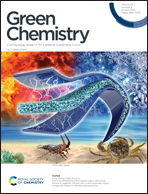Retrosynthesis from transforms to predictive sustainable chemistry and nanotechnology: a brief tutorial review
Abstract
Retrosynthesis is a tool initially developed to simplify the planning of the synthesis of organic molecules using a symbolic strategy involving disconnections to synthons. It can perform better when the initial strategy is supported by computer-assisted methods both in its strategy and tactic parts. With the progress of chemical knowledge management assisted by computer technologies, retrosynthesis got an opportunity to involve database mining, reaction prediction, machine learning (ML), and other data science tools, which allows for covering inorganic compounds and nanoparticles, for which strategy, e.g., the design of reaction conditions, is a critical issue. Bimetallic catalysts can be a surprising target. Retrosynthesis is also essential for green and sustainable chemistry. On the one hand, synthon representation makes it possible to select green type processes and reactants among many possible options; on the other hand, recent computer technologies involving ML-based methods give a chance to more precise control of the green and sustainable metrics at the early stage of its design (before synthesis). A variety of such metrics are described in the literature. Many of them are intuitive heuristics, especially for sustainability evaluation. Green methods are among natural retrosynthesis goals since chemists searching for simplifications always preferred safer and cleaner methods than hazardous ones. Chemical intuition is more important than rigorous quantification in traditional approaches. With the growing availability of novel retrosynthetic tools controlled by green and sustainable metrics, we can hope to observe the significant development of predictive green and sustainable methods. As predictive greenness and sustainability engage broad chemical areas and contemporary software tends to be a black-box-like architecture, we designed this tutorial to provide an easily understandable background for the chemical and materials science audience involved in drug and material design and discovery.

- This article is part of the themed collection: 2023 Green Chemistry Reviews


 Please wait while we load your content...
Please wait while we load your content...